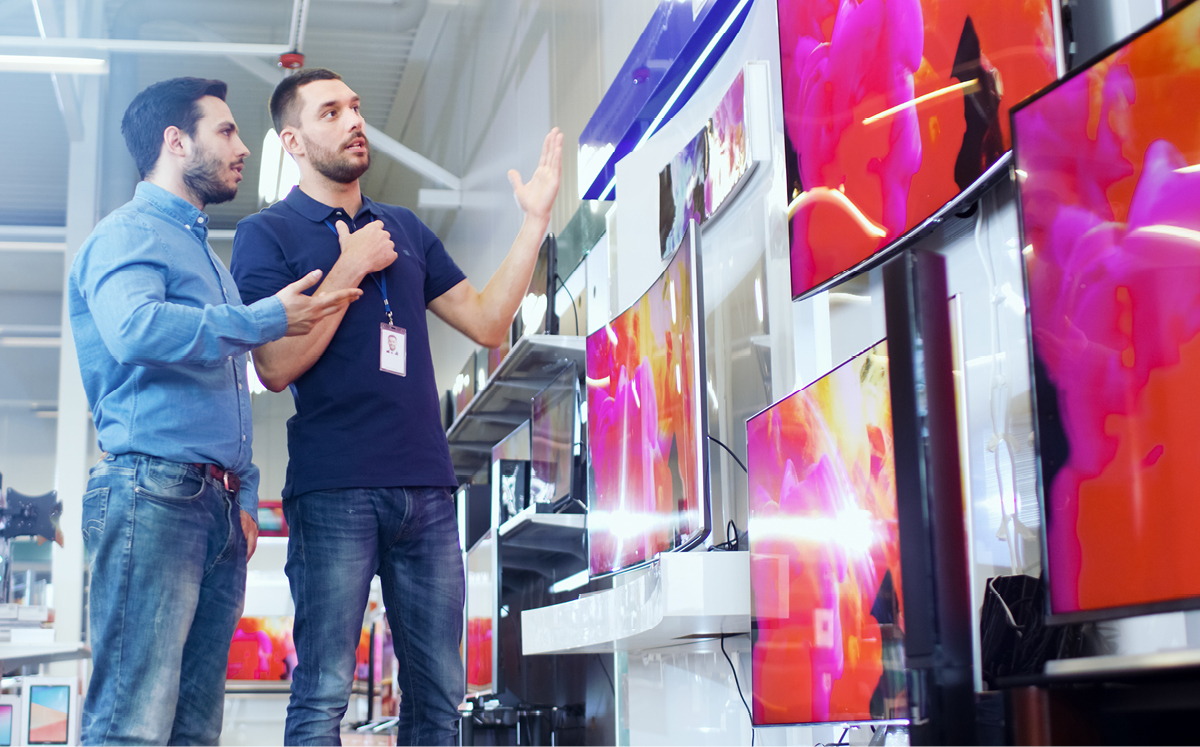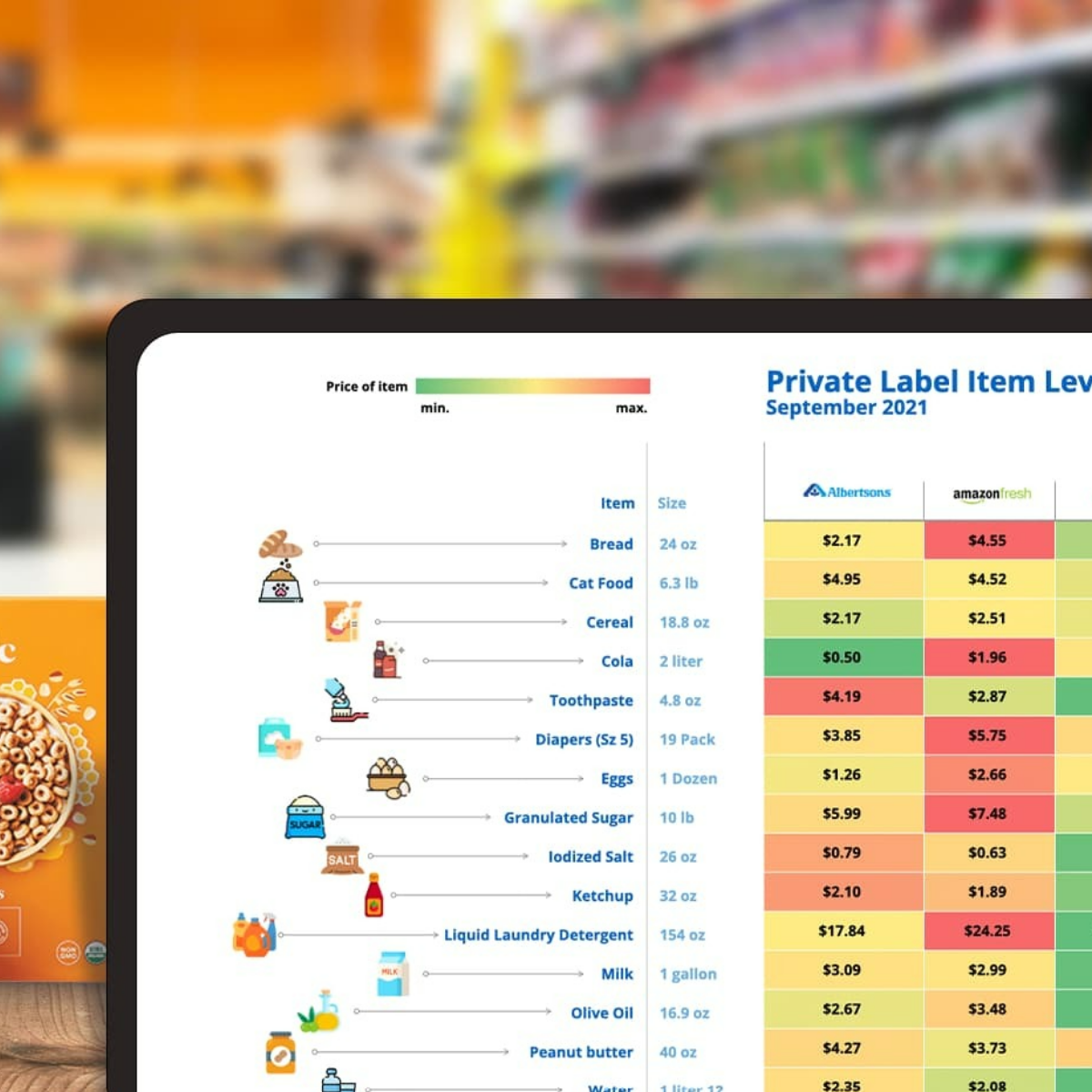Traditional retailers are determined to sharpen their online game against e-commerce pure plays, and the data we\’re seeing in consumer electronics purchases indicates these efforts have yielded positive results. According to NPD\’s Checkout E-commerce data, which tracks sales at the receipt level, traditional retailer websites gained online dollar share primarily in high average sales price (ASP) segments, spanning products such as TVs, PCs, tablets, and printers for the 12 months ending June 2018. We also see from our data that 29 percent of U.S. online consumer electronics (CE) dollar sales were made through traditional retailer websites.
Traditional retailer websites made up nearly half (46 percent) of online U.S. CE dollar sales for these higher ASP items, up three percentage points from the year prior. In lower ASP category segments, traditional retailers hold only 13 percent of dollar sales, as pure-play online retailers still dominate this more \’grab and go\’ segment.
Given traditional retailers\’ success in selling higher ASP segments, average online spend per purchase was nearly four times higher on their websites ($233/purchase) than through pure-play online retailers\’ ($60/purchase). However, pure-play online retailers are seeing an average of five additional annual purchases, compared to traditional retailer websites, providing more occasions to sell.
So, why might this be happening?
Curate, Curate, Curate
First off, if the real estate broker\’s mantra is \”location, location, location,\” the physical retailers\’ analog should be \”curate, curate, curate.\” In 2004, Barry Schwartz explained this in his best-selling book, The Paradox of Choice, that more choices aren\’t always better. In fact, endless aisles could be the cause of consumer non-choice and basket abandonment. Too many choices can cause confusion, anxiety, even choice paralysis. What the consumer is saying is, \”Narrow it down and give me a handful of choices that you, the expert, think I should be considering.\”
Limiting what a store chooses to merchandise can be a great thing. When the consumer doesn\’t have all the time in the world, when you don\’t have all the shelf space in the world, you\’re forced to make better merchandising decisions. Essentially, you\’re betting on your own ability to curate. Going back to old-fashioned merchandising is an essential and seemingly lost skill, but it\’s a critical one for the retailer to exercise because it can help limit unsold inventory and the need to discount.
In the past year, this bet seems to have paid off for the online channel of traditional retailers. And one explanation we offer for the strong performance coming from traditional retailers\’ websites is that they have succeeded in the high-ASP arena in part due to effective curation. To some extent, that\’s a question of leveraging expertise to present consumers with the options that best meet their needs, rather than everything under the sun.
Leverage All Channels
Next, it\’s important to remember that consumers research their technology purchases two ways. Some do their early research in store and shop online, while others do the reverse. Given this reality, brands and retailers must partner with each other both online and in-store to offer content that excites consumers. Then they need to leverage best practices for each channel. The ability for consumers to test out headphones in store, while receiving sales associates\’ help in navigating the store\’s website, can lead to a positive customer experience. This encourages consumers to use the web to identify different colors and limited releases that aren\’t stocked in the store, blending the best of offline and online shopping.
We can\’t overestimate the importance of the physical store. Even in an increasingly online world, a strong brick and mortar presence can play a pivotal role. First, physical stores offer the opportunity for the consumer to experience the newest upgrade of the flat-screen HD TVs. Online, they can all look pretty much the same and it can be hard to discern differences. But checking them out in the store, you can see subtle differences in contrast, clarity, dynamic range and the gamut of colors, all of which will affect the product\’s performance in your living room. Second, and in an environment when delivery can seem increasingly unpredictable, there\’s the opportunity to order online and pick up at the store. With this, we can better understand why online pure plays are fast announcing plans for deepening their brick-and-mortar presence. Third, brick-and-mortar stores have not only been capitalizing on their physical presence by offering buy-online, pickup-in-store, but they have been developing new capabilities for rapid home delivery.
Retailers Win by Being Retailers
Across the retail landscape, traditional retailers are finding success in bringing what they do well in store to the online channel. They are winning online in high ASP segments by leveraging their merchandising expertise and the strong product selections they have honed in-store to compete with ppure-playand direct-to-consumer online. This approach is paying off in the consumer electronics industry, as evidenced by growing online sales across a variety of categories.



